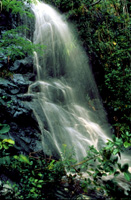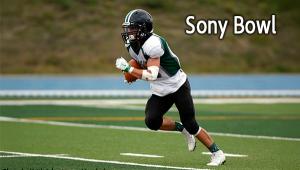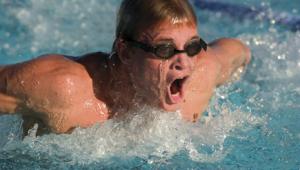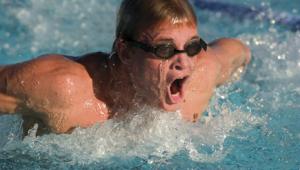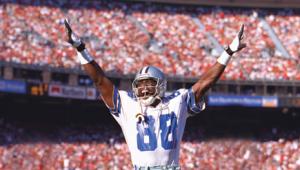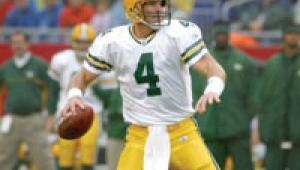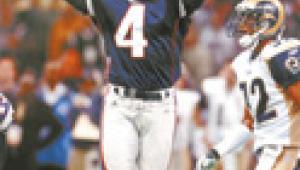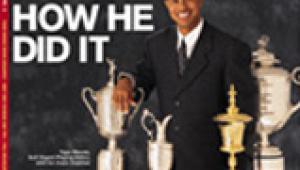He has been doing a complicated job and it takes real skill to succeed at this job. Travel blogs are so informative you would find both images and information about any place on these blogs. Recently I went to Barcelona and found out about Barcelona hotels on a blog.
The Travel Photo Market
An Underwater Photographer Comes Up For Air
Steve Simonsen learned photography
the hard way. Let's see, there was a rangefinder camera, lack
of lens choices, hyperfocal distance focusing, and flash ratios, not
to mention backscatter of light. All of this had to be dealt with and
there was no benefit of the auto-everything cameras. Did I mention that
Steve learned his photography skills while breathing out of a tank?
Underwater? |
|||
Steve's first foray
into taking photos underwater was to shoot 10 rolls of film during a trip
to the Caribbean, as instructed by the owners of the dive shop. According
to Steve, "On return to Colorado I used about 80 of the slides in
a slide show and the guys who taught me were jealous. The shots were so
much better than they had taken in five years of photography. I didn't
know what to say...these guys were the ones who showed me how to do
this. The difference was, I had looked at all the underwater world with
a different eye, unencumbered with the photography process, so when it
came time to take the photo I already knew what I wanted to show. It was
just a matter of going down and finding what I wanted." |
|||
Back in 1980, while still at
the hobbyist level, Steve went on a dive trip to Grand Cayman and witnessed
a fellow by the name of Dicky Walls selling photos from dive trips to
tourists. He decided that the money he saw being raked in was far and
above what he was making as a dive instructor. It wasn't until four
years later that he took his first full-time photography job with Club
Med, running their underwater photo shop and lab. Like many photographers
starting their first job, Steve says, "I didn't know jack!
There was no one there to show me the ropes, so I bought some books and
I closed down the lab for three days, read the manuals and books and learned
how to run the machinery and process E-6. I was running out and taking
pictures of flowers and anything, just to see if it worked." It
was during this time that he got his first taste of publication with a
photo in a French magazine. |
|||
With the still photography
came video and the choice each day whether to shoot stills or video. One
day when he had chosen the video camera Steve encountered a pod of whales.
"I shot all this great footage, just like you see on the Discovery
Channel. It was about 35 minutes worth, but it turned out to be just a
personal memory, because it wasn't broadcast-quality tape. I knew
if they were stills I could have sold them to magazines or advertisers
and I could have gotten top dollar. I decided then that still photography
was the way to go. I would do the tourist photos for practice and income,
but I set my sights on magazine photography. That's what I knew.
That's how I taught myself. I would look at a good photograph in
a magazine and look at my crappy photograph on the light box and I'd
say, why is my photo so bad and this one so good?" |
|||
Just as things were really
starting to go well, Hurricane Hugo forced a move from the island and
Steve found himself in Guam photographing Japanese tourists underwater.
Carrying three cameras on two dives a day, Steve sold almost every photo
from six rolls of film. "Even though the money was good, it wasn't
very gratifying. The side benefit was, I was getting lots of practice
and refining my technique." |
|||
After initially marketing himself
only as a dive photographer and doing topside photos for himself, he started
receiving inquiries for these "surface" images. Because the
audience is much wider, Steve quickly began selling more of these photos.
He built his base of contacts a little at a time. Being a photographer
in the national park was a help. When the park service received requests
for photos they'd refer people to Steve. In addition, he would contact
Caribbean Travel and Life whenever he heard that they were doing a story
in the area, because they were showing the kinds of images he liked to
take. |
|||
In order to get more images
into magazines, Steve started doing something that he's not particularly
fond of, writing articles to accompany his photos. "I need maximum
motivation...I don't like writing. I need clutter free time
to concentrate. So what I do, I go to bed early and wake up at 3am, have
my cup of coffee, and I write for two to three hours or I stare at the
blank piece of paper for two hours 'til I get something going." Topside Kit |
|||
What's up for Steve's
future? "I want to find a blend of commercial photography for good
income, while still following my nature photography desire. I never want
to lose track of that. I'm an underwater/nature photographer, but
I have learned a lot in an environment where everything can go against
you. The minute you do land photography you say, man, this is a breeze.
I'm working on photography for hotels. With the underwater background
I can do splits (half under and half above water), diving, or water sports,
and add in aerials, architecture, and more. In addition to my first love,
photographing for the editorial market with nature and travel images,
I now have a second niche that I enjoy doing--and it pays better."
Tips What's In Steve's
Dive Bag? |
- Log in or register to post comments




